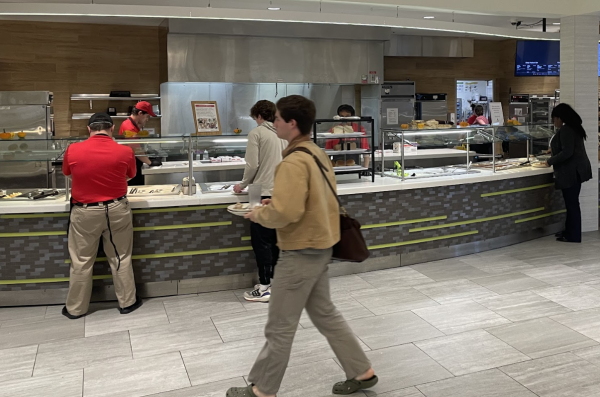Not all restaurants are invincible. In Oxford, some face invasion from cockroaches or disease. One man is working to stop these threats.
For a couple days most weeks, Ryan Peltier makes his way to Oxford for his job as a Butler County General Health District restaurant inspector.
When he visits a restaurant, he typically starts with a thorough hand wash as he scans the location for any problems that could compromise the safety of the food. He checks where food is handled and other places where it can come into contact with filth. He has to be thorough; even a crack in the building or slight change in temperature could put people’s food — and their health — in jeopardy.
While walking around the restaurant, Peltier talks with the person in charge, to fix any immediate problems.
“I’ll usually start with the things that can change,” Peltier said.
It’s not just about what Peltier sees. He checks the concentration of hand sanitizer and the temperatures of cooling units to make sure food doesn’t go bad.
The amount of time this takes varies depending on the risk level of a kitchen, based on the likelihood that food can be contaminated or illnesses can be transferred. Sometimes, the inspections take more than an hour just so Peltier has time to inspect the whole facility.
“It just depends on what’s going on that day, too,” Peltier said.
After inspections, Peltier, who graduated with a public health degree from Ohio University, writes an inspection report, giving violations for problems he noticed. Critical violations pertain to violations that increase the chance of illness, while non-critical violations don’t, but can affect the facility as a whole.
Most establishments get a few violations, and to Peltier, the violations aren’t quite punishments but rather chances to teach employees about proper food safety.
“This is a learning opportunity,” Peltier said. “I may only be in a facility a few times a year, so I want them to remember what I’m saying.”
Peltier conducts three types of inspections. Some are inspections for businesses with new licenses, others are sparked by complaints, and the rest are the unannounced inspections that are required either once or twice every 15 months, depending on a facility’s size.
Oxford has nearly 200 facilities inspected by Peltier and the health district, listed on the district’s website. Inspection reports can also be found there so restaurant-goers can make an informed decision about where they eat if they’re worried about safety.
It’s rare for businesses to close in Oxford from a violation-laden inspection. Just this year, Tea Cha House at 19 W. High St. received 13 critical and nine non-critical violations, including some for pests, during a standard inspection on Sept. 12. This week, after multiple follow-up inspections and an unresolved pest problem, the inspector said Tea Cha faces a hearing with the health district about the issue.
Caitlyn Brock, general manager for Garden Dining Commons, said the frequent inspections were helpful in figuring out if they had any potential problems.

“We take pride in our food safety,” Brock said. “[The restaurant inspections are] great tools to keep us all aware of what’s going on.”







